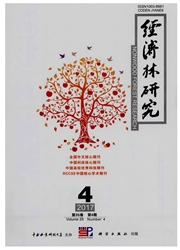

 中文摘要:
中文摘要:
为给提高欧李幼苗植株耐逆性提供理论指导,研究了在干旱胁迫下外源抗坏血酸 (AsA) 对欧李幼苗叶片光合作用和叶黄素循环的影响,并结合抑制剂与分子生物学的手段进一步研究玉米黄质 (Z) 形成的机制。结果表明,外施 AsA 缓解了干旱胁迫引起的欧李叶片光饱和点的降低,促进了内源 AsA 的产生,增加了叶黄素循环中 Z 的含量,使更多的紫黄质 (V) 转化成单环玉米黄质 (A) 和 Z。AsA 还能在转录水平提高紫黄质脱环氧化酶 (VDE) 的表达,而对玉米黄质环氧酶 (ZEP) 的作用不显著。抑制剂二硫苏糖醇 (DTT) 能显著抑制叶黄素的脱环氧化状态,但葡糖胺 (Gla) 作用不显著。表明外源 AsA 通过启动叶黄素循环增加胁迫下的热耗散能力,从而提高植株的抗胁迫能力,其中 VDE 对叶黄素循环的启动起到主要作用。
 英文摘要:
英文摘要:
In order to provide theoretical guidance for improving stress tolerance of seedlings in Cerasus humilis, the impact of exogenous ascorbic acid (AsA) on photosynthesis and xanthophyll cycle under drought stress was studied, taking seedlings of C. humilis as materials. Furthermore, the biosynthetic mechanism of zeaxanthin (Z) was also investigated by using inhibitor and molecular biology approaches. The results indicated that application of exogenous AsA alleviated reduction of light saturation point, promoted generation of endogenous AsA, and increased Z content in xanthophyll cycle, as conversion of violaxanthin (V) into antheraxanthin (A) and Z was promoted. AsA upregulated expression of violaxanthin de-epoxidase (VDE), but had weak effect on expression of zeaxanthin epoxidase (ZEP). Dithiothreitol (DTT) could significantly inhibit de-epoxidation state, and glucosamine (Gla) had weak effect on it. Exogenous AsA improved heat dissipation capacity under stress through initiaing xanthophyU cycle, so plant tolerance was improved, in which VDE played a major role.
 同期刊论文项目
同期刊论文项目
 同项目期刊论文
同项目期刊论文
 Role of spermidine and spermine in alleviation of drought-inducedoxidative stress and photosynthetic
Role of spermidine and spermine in alleviation of drought-inducedoxidative stress and photosynthetic FOLIAR SPRAYS OF PHOTOSYNTHETIC BACTERIA IMPROVE THE GROWTH AND ANTI-OXIDATIVE CAPABILITY ON CHINESE
FOLIAR SPRAYS OF PHOTOSYNTHETIC BACTERIA IMPROVE THE GROWTH AND ANTI-OXIDATIVE CAPABILITY ON CHINESE 期刊信息
期刊信息
